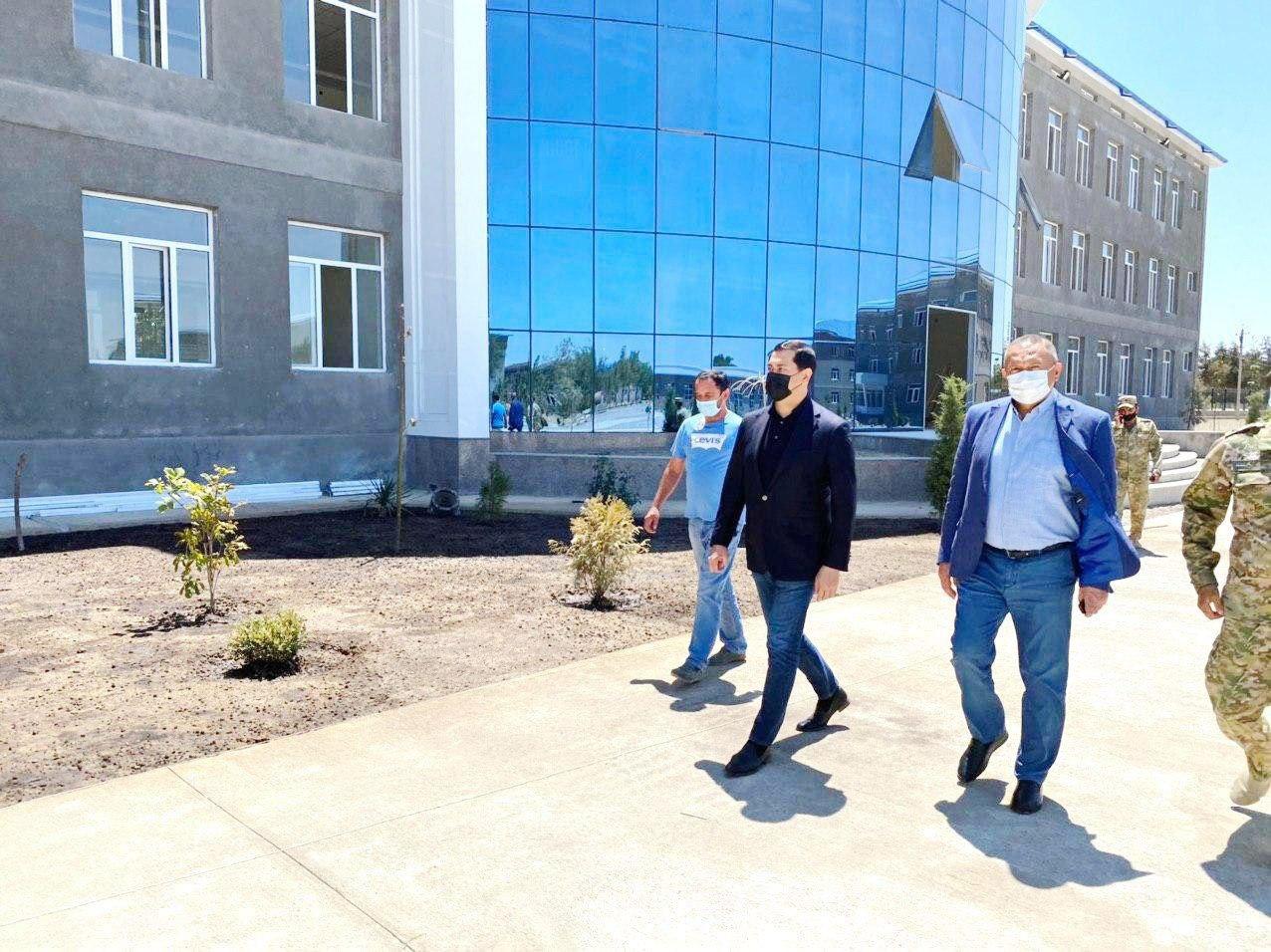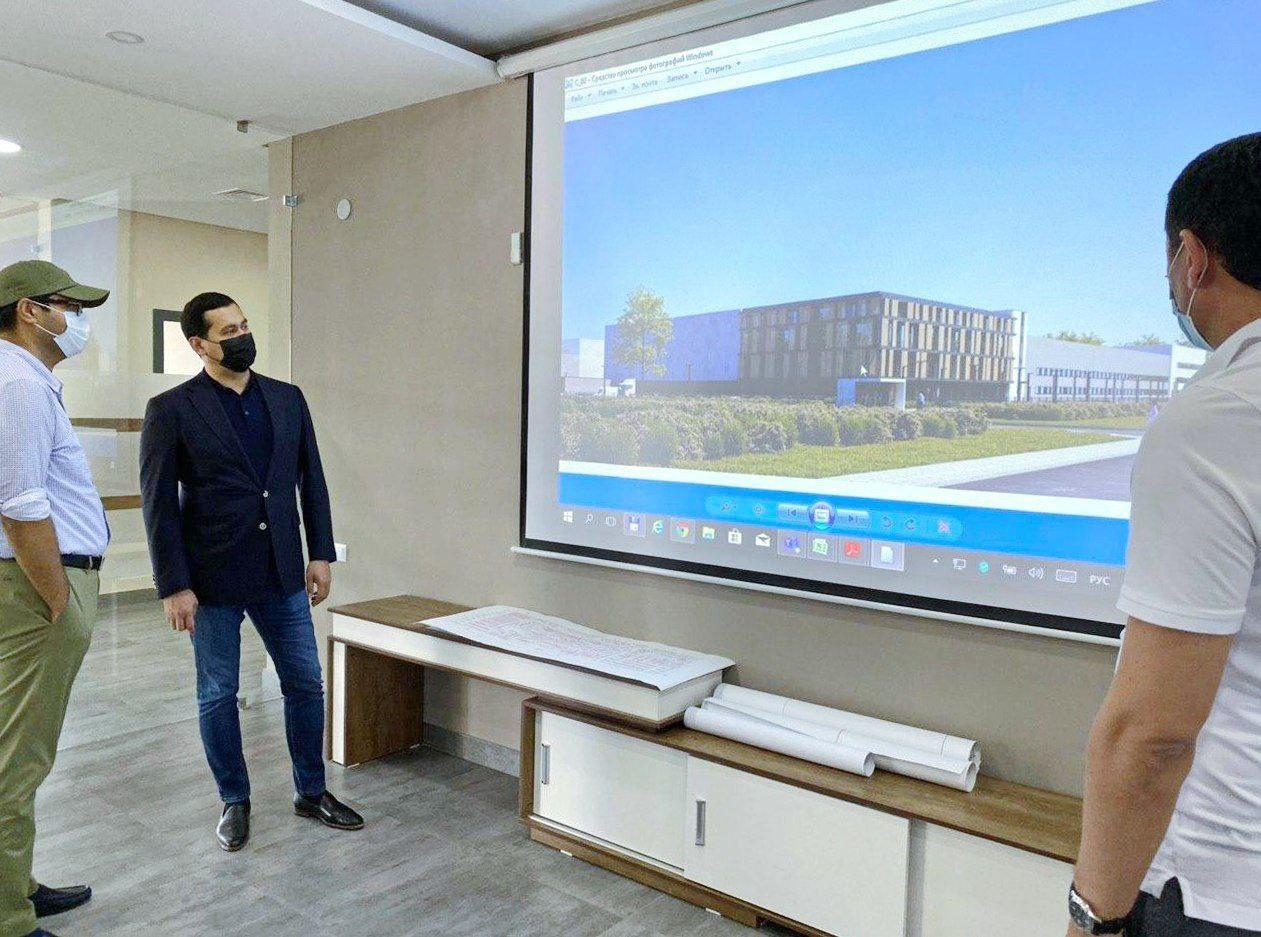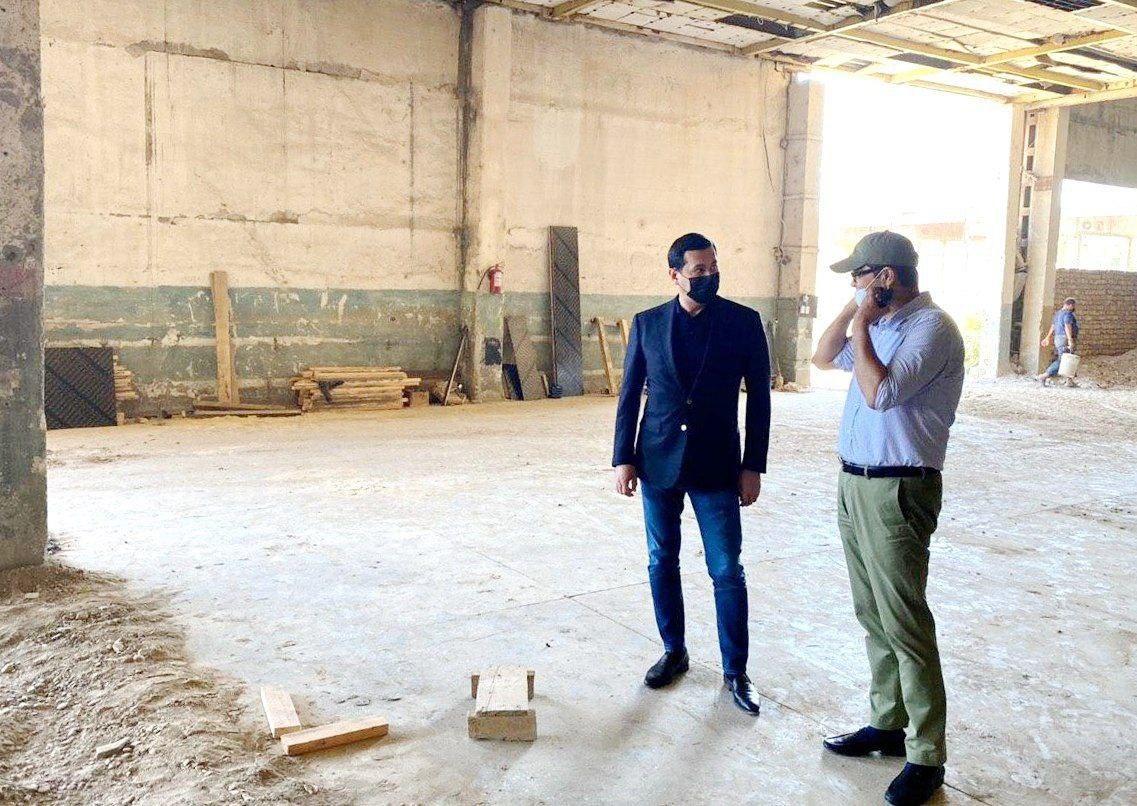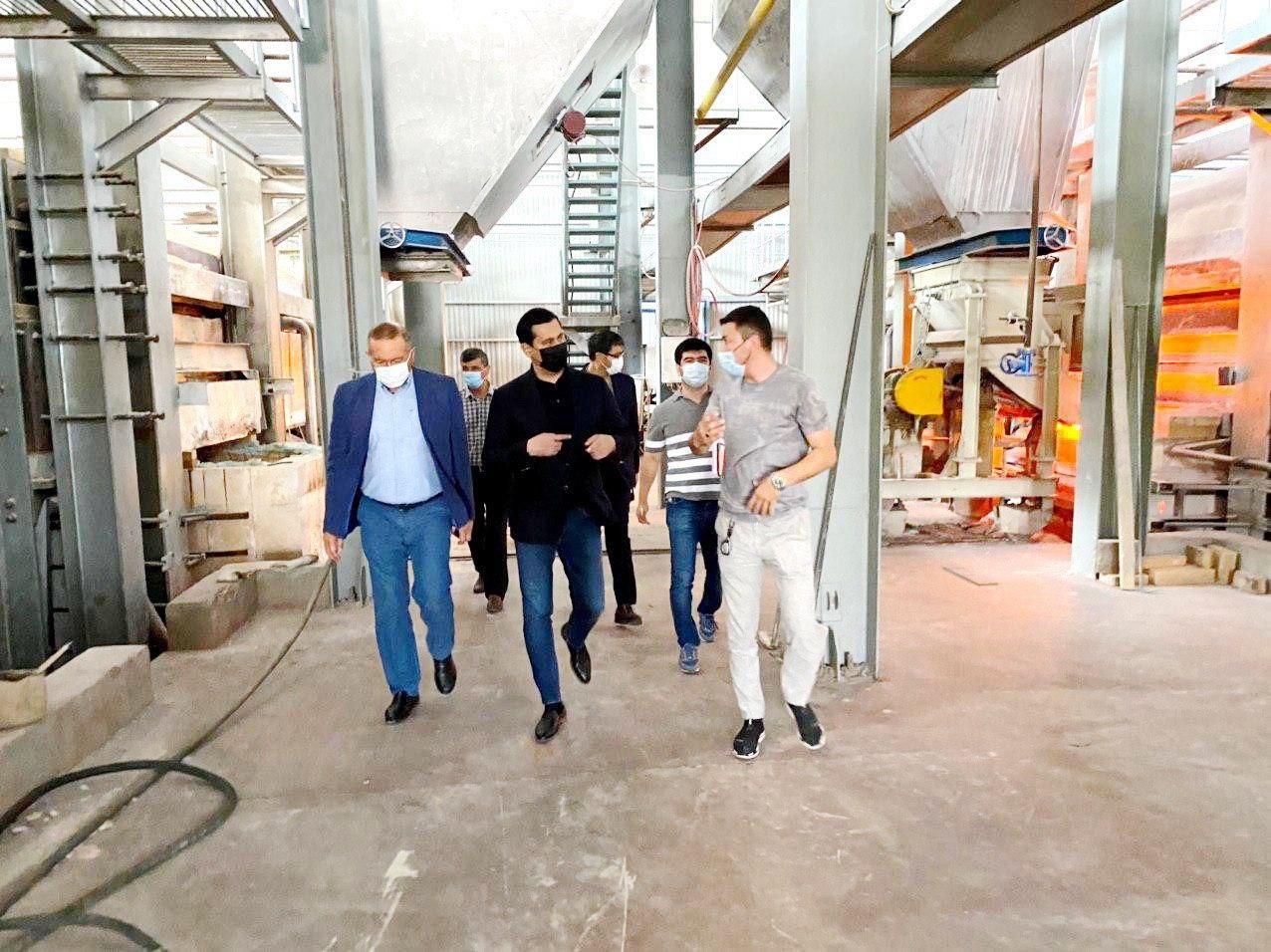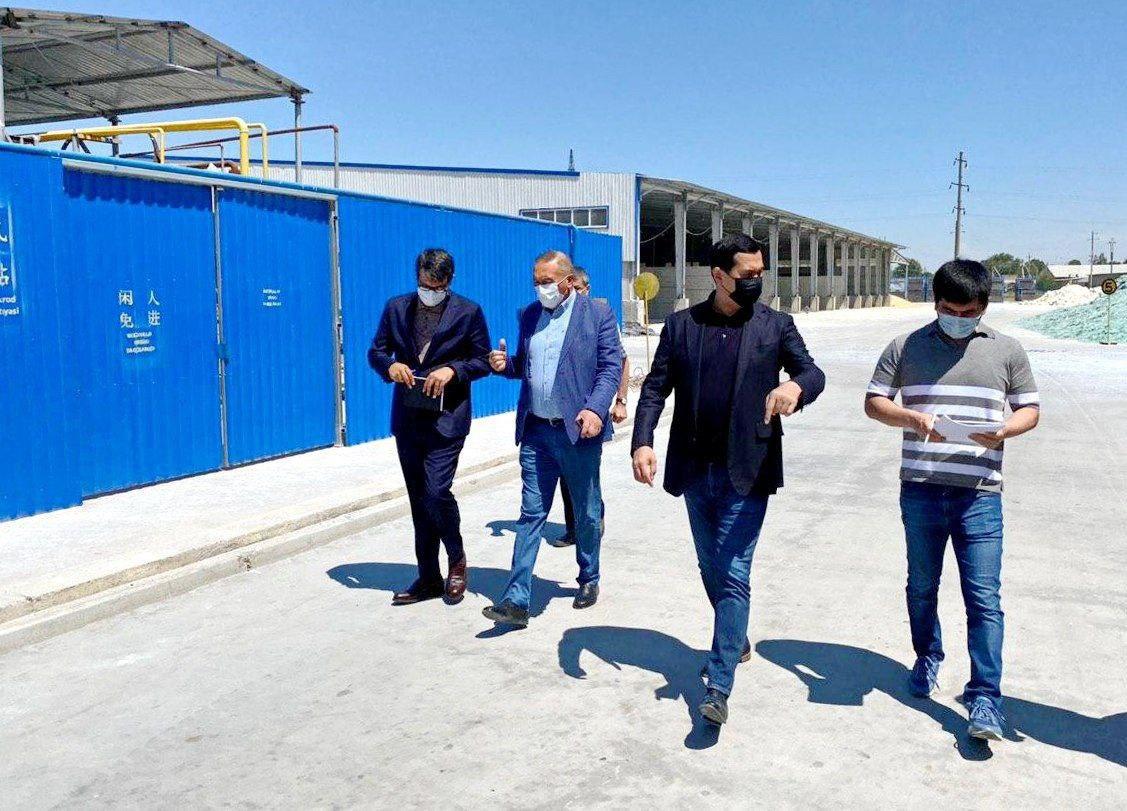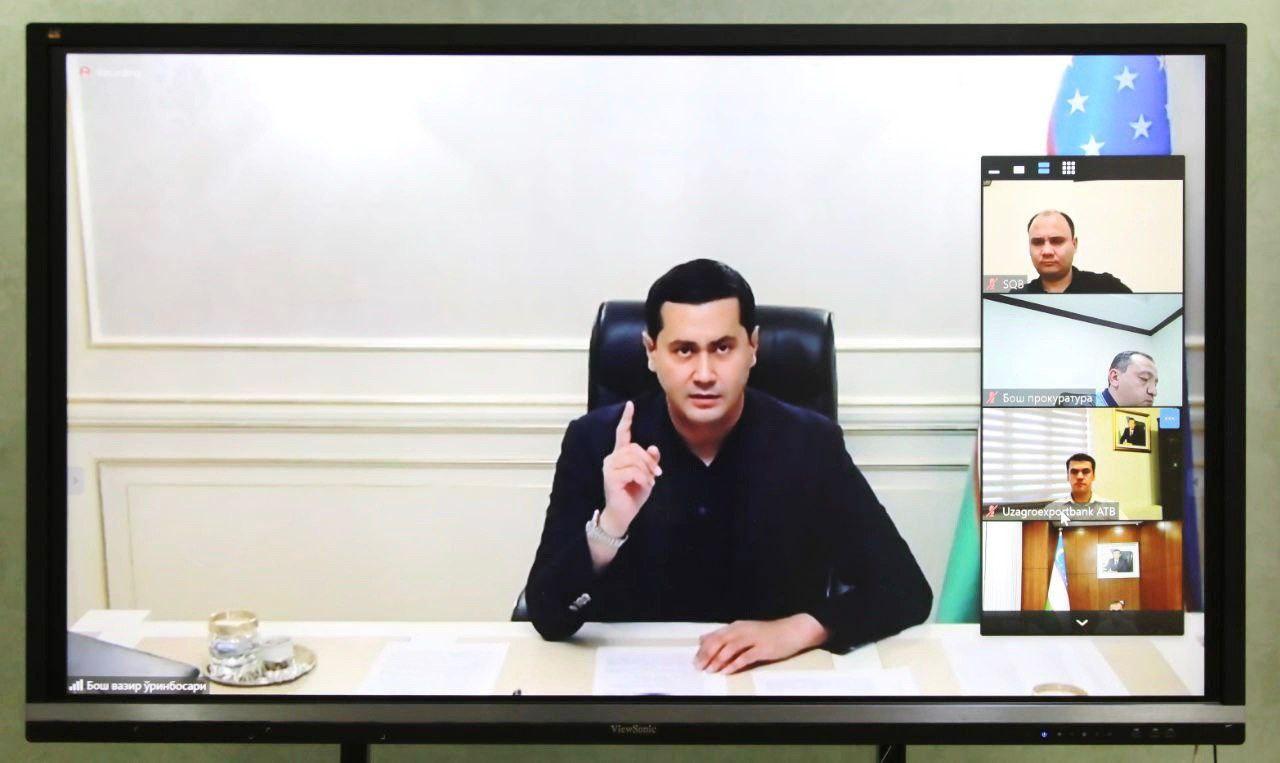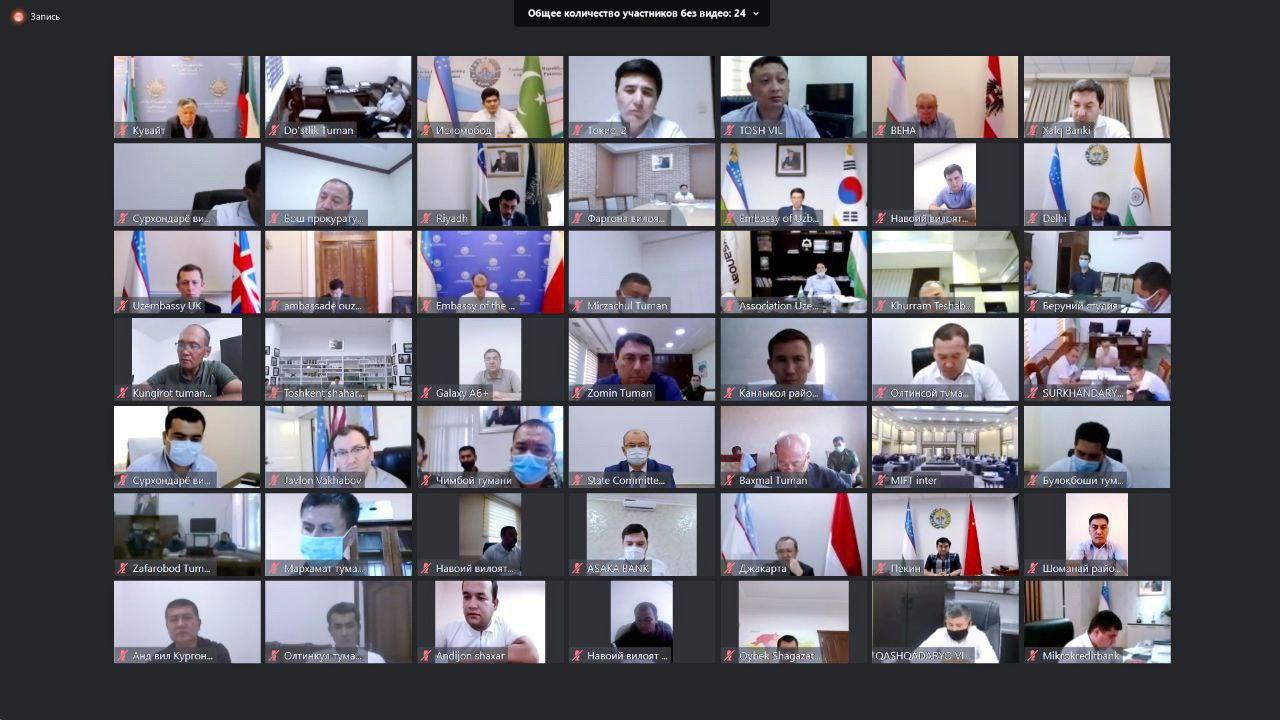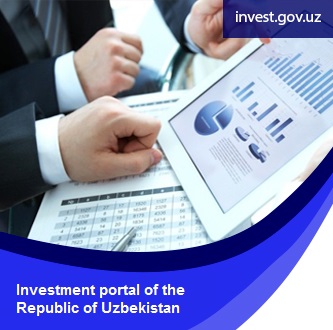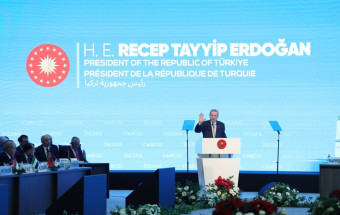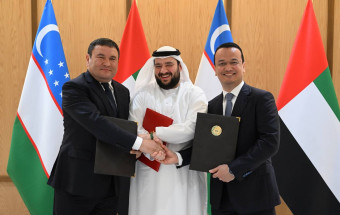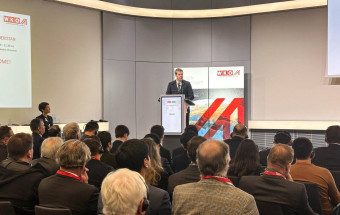The points for the growth of Jizzakh and Samarkand regions
On July 3, a Working Group headed by Deputy Prime Minister of the Republic of Uzbekistan S. Umurzakov and including heads of ministries, departments, industry associations and commercial banks begun to develop the new investment projects, promote entrepreneurship, reduce poverty across the population, as well as identify points for the economic growth of Jizzakh and Samarkand regions.
In Jizzakh region, the participants considered the progress in investment projects under the regional program for development: it is planned to implement 726 projects worth UZS 12.4 trillion for 2020-2021, including 549 projects worth UZS 4.9 trillion to be implemented this year. The launch of these projects will create 20.1 thousand jobs by the end of 2021. Executive officers received instructions to take measures to timely implement and launch these projects, as well as to search for additional reserves to form new projects and create new production facilities in the region.
They worked out the measures to increase the well-being of the population through the development of domestic labor. This area involved 44 projects, including 24 large-scale ones totally worth USD 28.2 million, mainly in the textile industry, as well as within poultry and horticulture. They also worked out opportunities for additional projects within animal husbandry, beekeeping, rabbit farming and fishing.
They reviewed the potential of Jizzakh Free Economic Zone as a separate driver of the region’s economic development. During the work, the Group revealed that the accelerated implementation of a number of investment projects requires strengthening of existing engineering and communication infrastructure. In view of this, the heads of the relevant departments received instructions to build additional transformer substations, build up high-voltage power transmission networks, automatic gas distribution stations and gas pipelines, reconstruct water supply and wastewater systems, including calculation of specific technical parameters and terms. These measures will not only solve the problems of enterprises that previously received the status of FEZ participants and are currently operating, but also create the potential to place new investment projects within the free part of FEZ area.
The participants identified significant untapped potential of Zamin-Pharm Free Economic Zone. The executive officers are working to generate constructive proposals to place promising and high-tech projects within this FEZ focused on the production of high-quality pharmaceutical products demanded in the domestic and foreign markets.
There is a goal to develop horticulture in Jizzakh region by adopting the export cluster model. Totally, Jizzakh region has 11.3 thousand hectares involved in the cultivation of fruit crops, including 3.9 thousand hectares reserved for intensive gardening. Therewith, in 2020, development of this sector involved additional 4.1 thousand hectares, which enabled increase of annual volume of fruit growing to 130 thousand tons by the end of 2021, which will be 40 percent more than in 2019. Consequently, the processing of fruits grown in the region will increase from 10.3% in 2019 to 15% by the end of 2021. There is a work to identify specific initiators and sources of project funding.
The textile and electrical industries, as well as the construction materials industry are designated as separate points of economic growth. For instance, the textile sector plans to implement 31 projects totalling USD 257.9 million, which provides for 8,218 new jobs. Consequently, by 2021, local processing of cotton yarn will reach 60% (growth - 80%), growth in fabric production - 76%, knitted fabric - 78%, finished sewing and knitting products - 2.7 times. The construction materials industry plans to begin the exploration of 36 new mineral deposits (marble onyx, cement, natural decorative stones, gypsum and anhydrite, limestone, expanded clay, silicate sand) and commercial development of the mined products in order to produce cement, lime, gypsum, fired brick sand, natural paving blocks, aerated concrete and reinforced concrete products. This area formed a package of 66 investment projects worth UZS 4.5 trillion, including by attracting USD 198.1 million of direct foreign investments with 36 projects worth UZS 556 billion to be implemented this year. This will result in 2,500 new jobs.
The participants reviewed current state of biological resources of the Aidar-Arnasay system of lakes. It became clear, that the reduction of performance in this system provides not only the reduction of fishing industry, but also an increased drainage of fresh water from the Syrdarya River to agricultural needs, which causes excessive salinification of area. The Working Group analysed the use of the Aidar-Arnasay lake system and developed proposals to increase its effectiveness, including the creation of a lake system development fund, optimization of the distribution of water resources through the electronic system, and organization of quotas for industrial fishing. There is also the development of mechanisms to integrate fish farming into a single system, to strengthen the poaching protection systems, as well as proposals for further development of the logistics infrastructure.
During the business trip, the participants considered the progress in investment projects, new production capacities and the identification of economic growth points in Samarkand region.
They analysed the regional development program, which includes 1,268 projects worth UZS 16.4 trillion, including 1,183 projects amounted to UZS 10.3 trillion to be implemented by the end of the first quarter of 2021. These projects will create about 25 thousand new jobs by the end of 2021 in the region.
There was the development of 153 projects to be implemented, including 27 major projects in textiles, horticulture, food industry, cocoon production, animal husbandry, poultry farming, fish farming, handicrafts, beekeeping and jewelry focused on the cooperation with the population and increase of its employment through domestic labor. The total amount of these projects is USD 104.2 million.
The parties considered the progress in the regional infrastructure projects. It was noted that the total amount of projects here is USD 273.5 million, with USD 90 million raised from the Abu Dhabi Development Fund to be sent to the modernization of potable water distribution in Samarkand, USD 66 million allocated by the World Bank to the construction and reconstruction of water supply and sanitation networks of the region as a whole and partially, i.e. Kattakurgan city. Additional funds of international financial institutions amounted to USD 117.5 million will be used to construct and upgrade sewage systems in 6 district centers and urban-type settlements.
From this perspective, it is planned to intensify the development of new projects to modernize the central streets of Samarkand, as well as the construct and equip the region’s main roads totalling USD 217 million.
Having considered the operation of the new Urgust Free Economic Zone, the participants developed measures to accelerate the carpet making, ready-made leather and footwear, as well as household appliances production projects here. They also identified certain areas to expand this zone by joining 730 hectares in Urgut and Pakhtachinsky districts, as well as in the cities of Samarkand and Kattakurgan.
There was the development of promising projects to be implemented by countrypeople living and having business abroad. This area will implement 43 projects amounted to USD 366.1 million.
Considering the climatic conditions of the region, there were instructions to pay attention to the development of horticulture and viticulture through the widespread adoption of the export cluster model, which includes the growing, collecting, processing, storage, certification and transportation of products. In 2020-2021, these projects will involve 3.1 thousand hectares of lands, including 800 hectares previously used to grow cotton and wheat. At the same time, it is expected that these projects will result in annual fruit production increase from 334 thousand tons to 431.5 thousand tons (an increase of 30%).
The Working Group will continue its work in Jizzakh and Samarkand regions to ensure the implementation of the goals, solve the existing problems of entrepreneurs, as well as identify specific initiators and sources of funding for projects above.
During the visit, Deputy Prime Minister of the Republic of Uzbekistan S. Umurzakov headed the discussion of the export activity results for the first half of this year, measures taken and proposals developed to stimulate the integrated social and economic development of certain Republican's regions via video-conferencing.
The participants said that domestic enterprises exported products worth USD 6.1 billion for 6 months of this year. At the same time, export activities involved 950 new enterprises, as well as arranged the delivery of 85 new products abroad.
The participants heard the reports of the heads of industry departments and local authorities, which became the basis for analysis of systemic factors impeding export activities, as well as for assessment of the effectiveness of measures providing practical assistance to exporting enterprises. For example, targeted and timely allocation of loans to textile enterprises to replenish working capital resulted in the export of textiles amounted to USD 828 million. There were instructions to develop practical measures to minimize possible negative impact of external negative factors on the foreign economic activity of industries and regions of the Republic in the second half of this year.
Separately, they noted the performance of the diplomatic missions of the Republic of Uzbekistan abroad with their intentional work, which enabled additional export volumes of USD 2.7 billion in the first 6 months of this year.
Discussion also touched upon constructive suggestions to further increase export potential of regions and industries. The executive officers received instructions to use all available resources, as well as fully apply the developed mechanisms to support entrepreneurs in order to increase the export of domestic manufacturers, including specific measures to diversify export markets and the range of commodity items.
Separately, the participants considered the progress in instructions provided during the visit of the President of the Republic of Uzbekistan to Fergana region, in particular, concerning the stimulation of accelerated social and economic development of Sokh region. In 2020-2021, it is planned to implement 98 investment projects totaling UZS 216.1 billion with 4,920 new jobs in this region. It was noted that this course was under the progress. Resources of commercial banks and investor funds are allocated to enhance entrepreneurship and support business in the region.
Video conference resulted in targeted instructions to the executive officers of ministries, departments, commercial banks and local authorities specifying exact terms.


